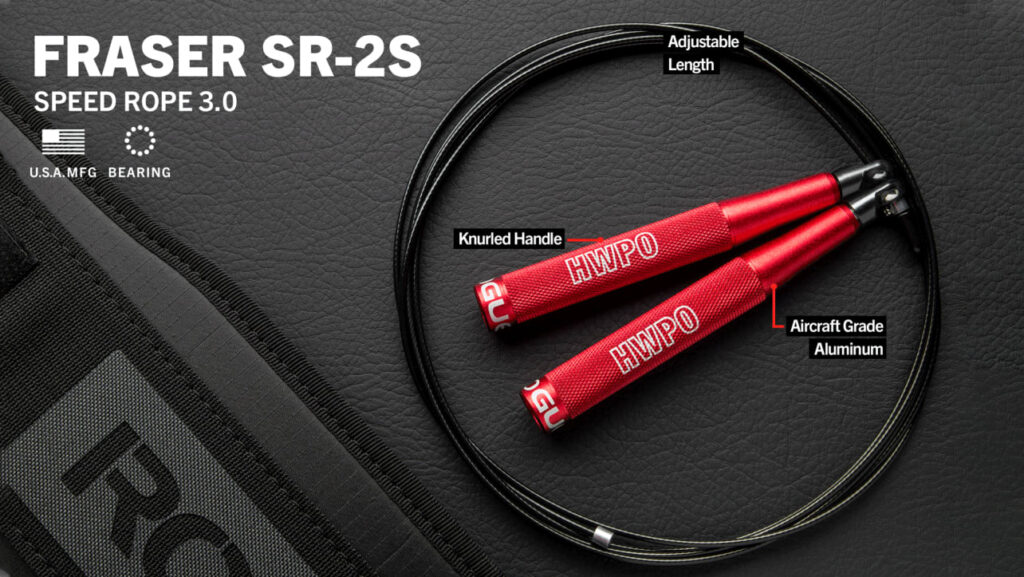Jump ropes have been around for millennia and used for a variety of activities. Although they are frequently utilized in fitness and sports training, they are also excellent for leisure pursuits. It can be difficult to choose the best jump rope for you because they come in a variety of sorts, sizes, and materials. This article will instruct you on how to select the ideal jump rope for your requirements, how to use it correctly, and the numerous advantages of including jump rope activities in your routine.
Introduction
Jumping rope is a total-body exercise that tones muscles, increases cardiovascular health, and burns calories. Coordination, balance, and agility can all be enhanced by jumping rope. In this post, we will go through the various advantages of jumping rope, the various types, how to pick the best one, and how to use it correctly.

Why use jump ropes?
A cheap and practical approach to remain in shape is using a jump rope. They may be used practically anyplace, whether at home, the gym, or outside, and they are simple to store. Jumping rope is a high-intensity exercise that is less strenuous on your joints than running or cycling but can burn just as many calories.
Jump rope varieties
There are numerous types of jump ropes, each with a distinct use. These are the most typical varieties of jump ropes:
Speed Ropes
Speed ropes are made for fast leaping and are light and thin. They typically have a smooth and quick rotation and are constructed of nylon or PVC. Speed ropes are excellent for cardiac exercises, double unders, and more challenging jump rope maneuvers.
Weighted Ropes
Weighted ropes are meant to provide resistance in your workout and are heavier than speed ropes. Typically composed of nylon or PVC, they contain handles that are stuffed with metal, sand, or other materials. Weighted ropes are excellent for increasing physical strength and stamina.
Freestyle Ropes
Advanced jump rope feats and tricks can be performed with freestyle ropes. They are often made of PVC, and the rope is heavier and thicker for better control. Freestyle ropes are excellent for demonstrating your abilities because they come in a variety of colors and patterns.
Beaded Ropes
Beginners and kids love beaded ropes because they may be fashioned using plastic or wooden beads. Compared to speed ropes, they are heavier and provide you greater feedback when you leap. The synchronization, timing, and rhythm that beaded ropes promote are excellent.
Adjustable Ropes
Because adjustable ropes’ lengths may be changed, they can be used by people of various heights. Speed ropes, weighted ropes, and freestyle ropes are just a few of the varieties that are available. Sharing ropes with family and friends of various heights is made easy by their adjustability.
Leather Ropes
Leather ropes are strong and long-lasting since they are made of premium leather. Advanced jumpers can use them since they are more substantial than speed ropes and offer a decent grip. Leather ropes are great for outdoor use because they can tolerate rough weather.
PVC Ropes
Jumping ropes made of PVC are the most popular and are appropriate for both novice and expert jumpers. For individuals on a tight budget, they make a great option because they are lightweight, strong, and economical. PVC ropes are excellent for cardio and fitness training and come in a variety of colors and sizes.
Smart Ropes
Jump ropes with cutting-edge technology called “smart ropes” track your performance and provide you feedback via an app. They have sensors inside that count the number of leaps made, the calories expended, and the duration of each jump. For those who want to track their development and raise their level of fitness, smart ropes are fantastic.

The Best Jump Rope to Use
Your level of fitness, your goals, and your tastes will determine which jump rope is best for you. When selecting a jump rope, take into account your fitness level, height, weight, and the type of workout you wish to conduct. A decent jump rope should be easy to modify, comfortable to grasp, and robust.
How to Measure a Jump Rope
To measure your jump rope, place one foot in the middle of it and bring the handles up toward your armpits. The handles should be just below or at the level of your armpits. If the rope is too long, shorten it by tying knots or, if your rope has an adjustable mechanism, by utilizing it.
Jump Rope Techniques
Jumping rope is a versatile, easy-to-do workout that has several benefits. The following are some fundamental jump rope moves:
Primary Jump
Jump rope handles should be held at hip height with elbows near to sides. As soon as the rope reaches your feet, jump while swinging it over your head. Your knees should remain slightly bent when you land on the balls of your feet. Repeat for a predetermined period of time or jumps.
A Different-Foot Step
Swing the rope while jumping on one foot; on the following jump, switch to the other foot. Maintain a modest bend in your knees and keep your core active.
Step on one knee
As you jump, bring your knees up to your chest. Keep your core active while alternating your feet.
The Double Under
Jump far enough each time so that you cross the rope twice beneath your feet. It takes coordination and practice to master this sophisticated skill.

Jump rope exercises provide advantages
Numerous advantages of rope jumping for health and fitness include:
- Cardiovascular Health is Improved: Jumping rope is a vigorous cardio exercise that helps lower cholesterol, blood pressure, and heart disease risk factors.
- Utilizes Fat and Calories: Jumping rope is a great exercise for losing weight and toning your body because it burns calories and fat.
- Balance and Coordination are enhanced: Jumping rope calls for balance and coordination, which can enhance overall sports performance and lower the chance of slips, trips, and accidents.
- Boosts Muscle Strength: Jumping rope is a great full-body exercise because it strengthens your legs, arms, and core, among other muscles.
- Boosts Bone Density: An activity that increases bone density and lowers the risk of osteoporosis is jumping rope.
Jumping Rope Safety Tips
Follow these safety recommendations to avoid being hurt when jumping rope:
- Put on sturdy, comfy footwear.
- Keep your core tight and your knees slightly bent when you leap. Select a flat, non-slip surface.
- Start with quick, easy workouts and progressively up the duration and intensity.
- Stop leaping if you experience pain or discomfort, and get medical attention if necessary, if you have knee or ankle issues, are pregnant, or both.

Exercises With Jump Rope
You can adjust a jump rope workout to meet your fitness level and objectives. Here are some examples of workouts:
Workout for Novices
- For 30 seconds, jump rope.
- 30 seconds of rest
- Repetition for 10 to 15 minutes.
Intermediate Exercise
- One minute of rope jumping
- 30 seconds of rest
- Repeat for 20 to 30 minutes.
Advanced Exercise Techniques
- two to three minutes of rope jumping
- 30 seconds of rest
- Repeat for 30 to 60 minutes.
Upkeep of Jump Rope
Follow these maintenance recommendations to extend the life of your jump rope:
- Keep your jump rope in an area that’s dry and cold.
- Attempt to keep it out of the sun and hot environments.
- Clean and dry the handles.
- The rope should be frequently inspected for damage and replaced if necessary.
- To stop the rope from tangling, lubricate it with silicone spray or oil.
Conclusion
In conclusion, jumping rope is a useful and efficient tool for enhancing your physical fitness and health. There is a jump rope to meet your requirements and tastes, whether you are a novice or an expert jumper. You can select the ideal jump rope, utilize it effectively, and take advantage of the numerous benefits of jumping rope exercises by using the advice and practices in this article.
FAQs
Is jumping rope a healthy cardiovascular exercise?
Yes, jumping rope is a high-intensity aerobic exercise that can help your heart health and level of fitness.
How much time should I spend jumping rope?
You can begin with brief sessions of 5 to 10 minutes and then gradually lengthen them as you get more fit.
Can bouncing a rope aid in weight loss?
Yes, jumping rope burns calories and fat, making it a useful exercise for slimming down and toning the body.
Which jump rope model is ideal for beginners?
For beginners, beaded or PVC ropes work well since they give more feedback and are easy to manipulate.
How frequently should I jump rope?
To avoid overuse injuries, jump rope 3–4 times per week while alternating with other forms of exercise.

